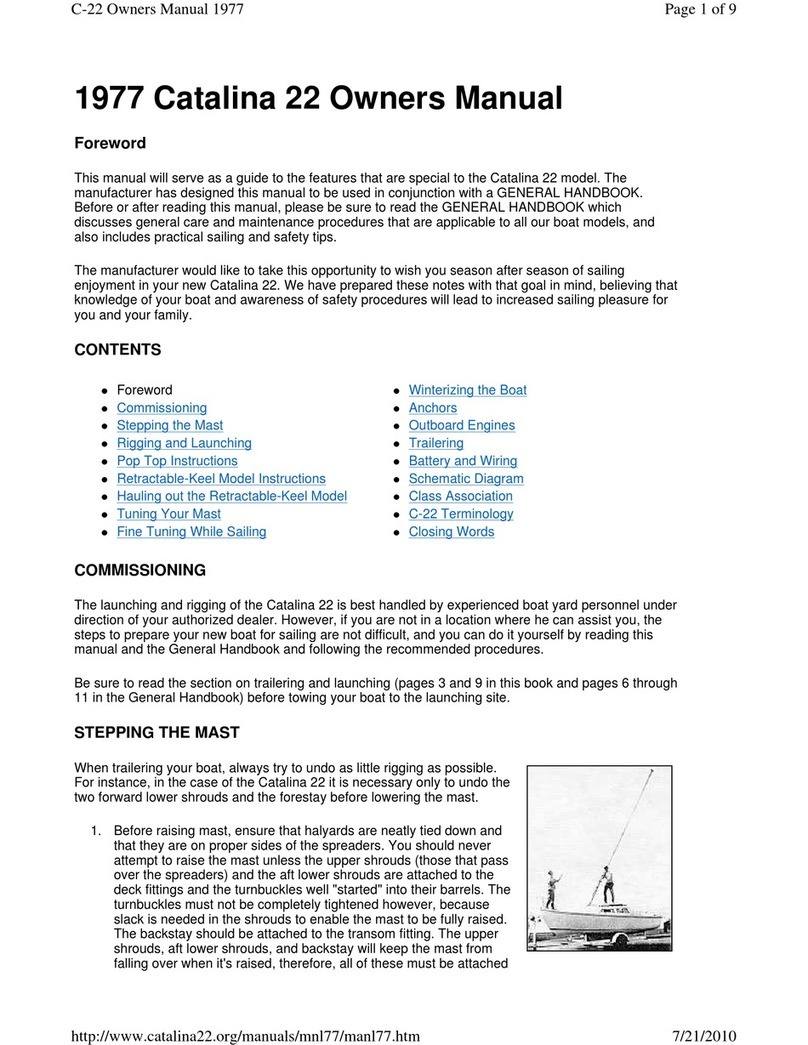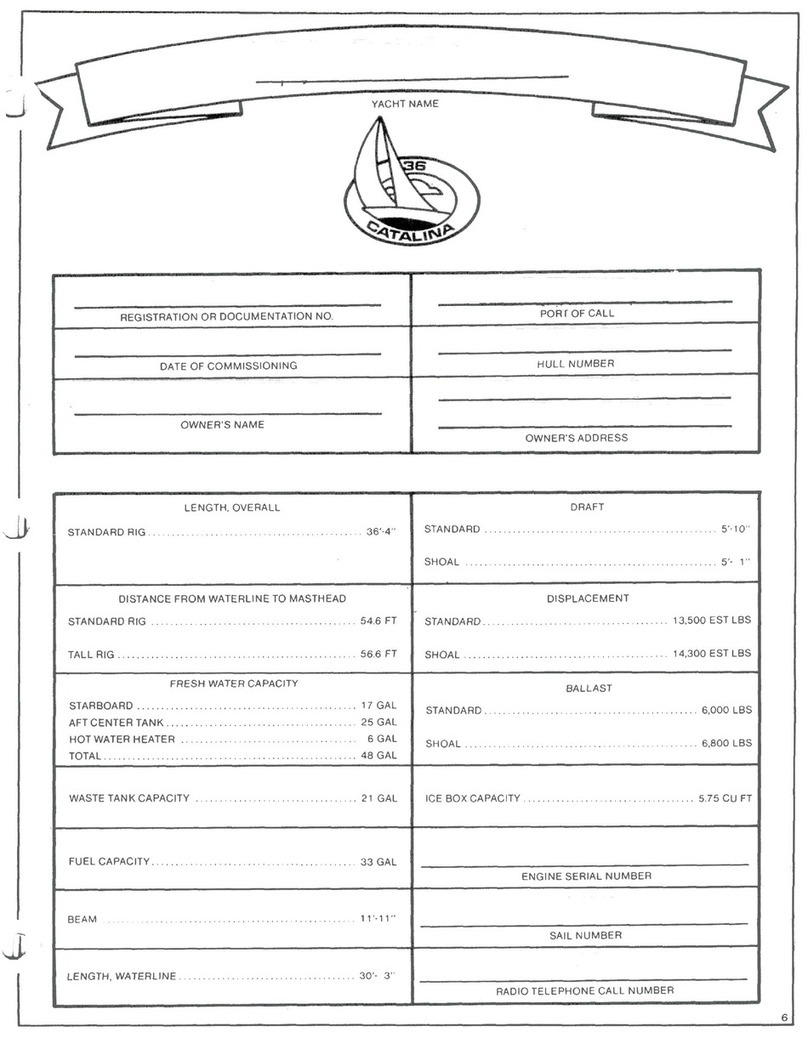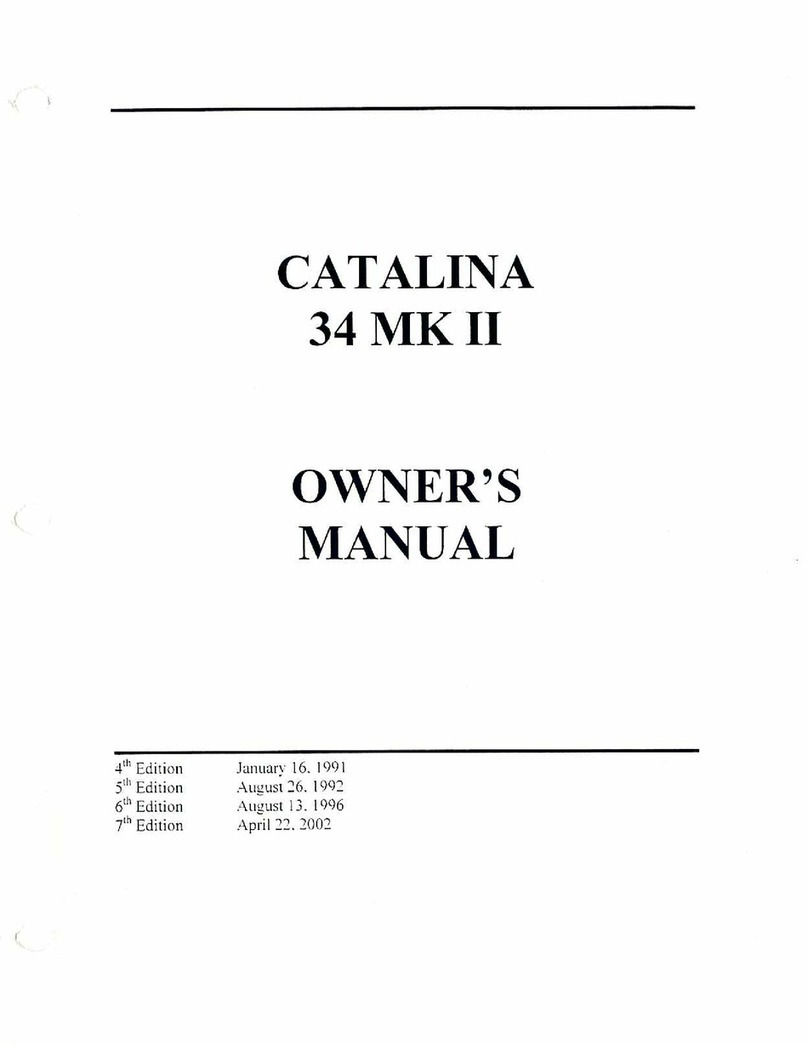
iii
Foreword
We have included this manual to provide answers to common questions regarding the maintenance and
systems design specific to your Catalina 250.
This manual is not intended to provide sailing instruction. It is assumed that the operator is either experienced
in sailing or has the intent to seek sailing instruction through courses and/or written materials that are available
on the subject. A thorough understanding of the fundamentals of sailing is important in order to ensure safe
operation of your Catalina 250.
The systems, descriptions, and illustrations in this manual apply to boats built at the time of publication. It is
our commitment to the current owners, and future owners, to constantly review and improve the Catalina 250.
Therefore, portions of the content of this owner’s manual may not apply to boats that have been manufactured
before the release date shown on this manual.
Owners of hulls that were built prior to the release of this owner’s manual are strongly encouraged to consult
their authorized Catalina dealer, or contact Catalina Yachts for information pertaining to their boat. Please
include your hull number when requesting information.
The maintenance checklists contained within this manual are provided as guidelines for boats operating in
typical conditions under normal service intervals.
Certain climates and conditions may require additional or specific maintenance, operational, and/or storage
procedures. Please consult local boating service professionals, or your authorized Catalina dealer, for
maintenance and service procedures that may be applicable to regional conditions where your boat is stored
and operated.
Caution: Aluminum and other metal parts on your boat conduct electricity. Coming in contact with or being
in the proximity of overhead power lines, or lightning; may cause serious injury or death. Keep a safe distance
from power lines while launching and/or operating your boat.
Literature pertaining to included or optional equipment, manufactured by others, will be provided with this
manual where available and applicable to the hull number for which this manual is supplied. This information
has been furnished by the manufacturer of these items and may contain illustrations or instructions that vary
from the procedures/practices that are recommended by Catalina Yachts. Catalina will not be held responsible
for the instructional information provided by others –please refer any questions to your local authorized
Catalina dealer.






































